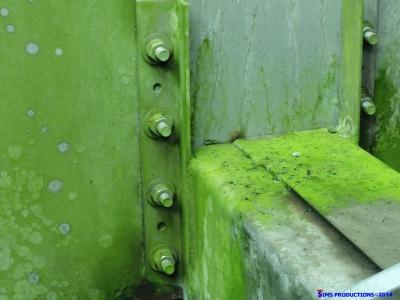Biofouling

Biofouling occurs when microorganisms such as algae, fungi, and bacteria are abundant on the surfaces of cooling towers, and the frequency of reoccurrence depends on your system’s operation (as with open versus closed systems). The cool, moist environment within cooling towers can provide optimal conditions for microbial growth. Microbial activity can be categorized as planktonic,sessile biogrowth which leads to biofilm formation. Biofilms can form slimy layers on the surfaces of cooling towers causing accelerated corrosion, perforate heat exchanger surfaces, and cause biofouling. Biocides provide biofouling protection for your cooling tower by slowing the growth of microorganisms and decreasing microbial CFUs (colony forming units) recirculating in the system’s water. While biocides can differ between systems, the following factors should be taken into consideration: persistence of biocide, applicable dosage, and chemical alternatives. A biocide with low persistence will allow effective treatment with low environmental impact. The proper dosage should be applied for optimal microbial growth prevention. Chemical alternatives consist of altering pH, salinity, and temperature which deter microbial growth while allowing process control to operate efficiently. As a system ages, the optimal ranges of these factors can change, and process control monitoring with routine measurement of biocides provide vital information on the effectiveness of treatment. Environmental Earthwise can, upon request, recommend effective biocides for your system’s water treatment.





